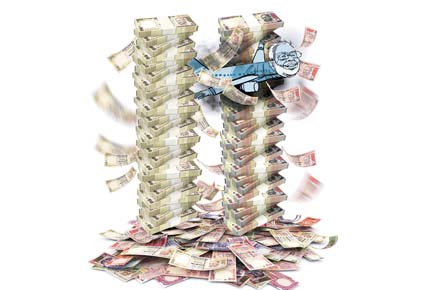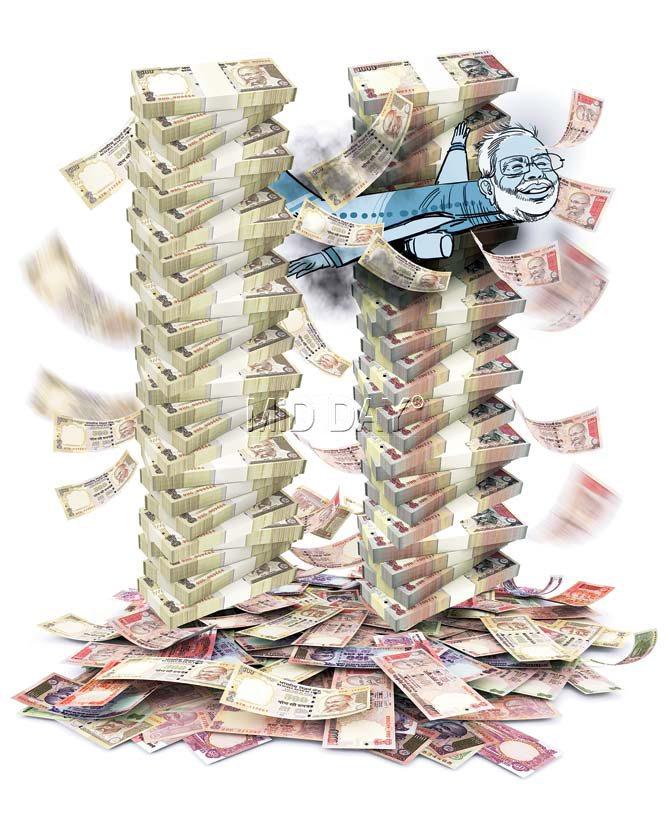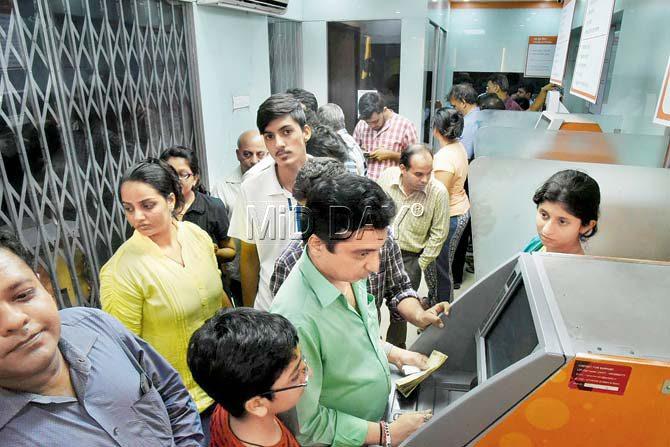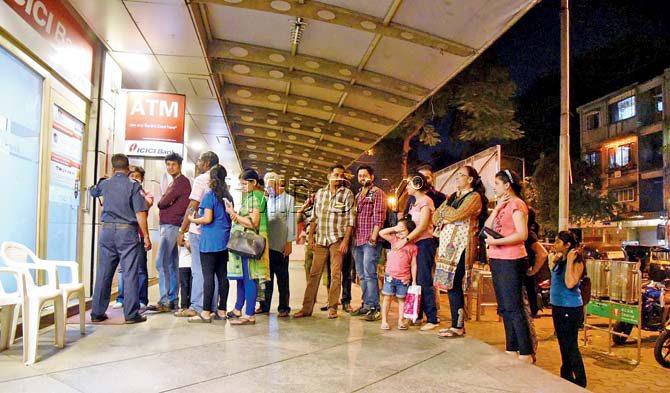PM Narendra Modi crashes twin towers of black economy by demonetising Rs 500 and Rs 1,000 notes; unleashes chaos on the streets and bamboozles experts by introducing a new Rs 2,000 note


Illustration/Uday Mohite
ADVERTISEMENT
New Delhi: Taking the nation by surprise, Prime Minister Narendra Modi last night announced demonetisations of Rs 1,000 and Rs 500 notes with effect from midnight, making these notes invalid in a major assault on black money, fake currency and corruption. In his first televised address to the nation, Modi said people holding notes of Rs 500 and Rs 1,000 can deposit the same in their bank and post office accounts from November 10 till December 30. In his 40-minute address, first in Hindi and later in English, the Prime Minister said the notes of Rs 500 and Rs 1,000 “will not be legal tender from midnight tonight” and these will be “just worthless piece of paper.”
Also Read: 'Note'-worthy! Twitterati 'celebrate' demise of 500 and 1000 rupee notes

There was a mad rush across ATMs in the city shortly after the Prime Minister’s address. Pics/Rane Ashish
History repeats itself
The sudden move to demonetise Rs 500 and Rs 1,000 currency notes is not new. Rs 1,000 and higher denomination notes were first demonetised in January 1946 and again in 1978. The highest denomination note ever printed by the Reserve Bank of India was the Rs 10,000 note in 1938 and again in 1954. But these notes were demonetised in January 1946 and again in January 1978, according to RBI data. The Rs 1,000 note made a comeback in November 2000. Rs 500 note came into circulation in October 1987.
Read Story: Rs 500, Rs 1,000 notes declared illegal from midnight: Narendra Modi

Soon after the Prime Minister’s announcement, long queues started forming outside ATM centres all over the city. Pic/Rane Ashish; Text: Rupsa Chakraborty, Aparna Shukla, Silky Sharma, Shashank Rao
 Subscribe today by clicking the link and stay updated with the latest news!" Click here!
Subscribe today by clicking the link and stay updated with the latest news!" Click here!






